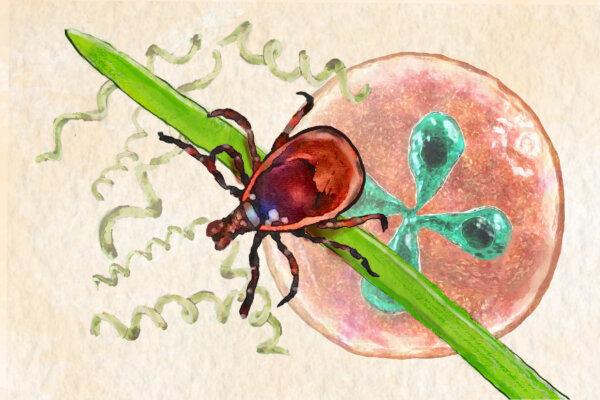Preventing and Treating Tick Bites in Canada
The arrival of the season of creepy-crawlies in Canada brings with it a particular insect that poses a significant danger: ticks. These tiny parasitic arachnids can carry bacterial illnesses, infections, and various fevers, threatening both humans and pets.
Among the over 40 tick species in Canada, the blacklegged tick and Western blacklegged tick are most commonly associated with Lyme disease, a potentially serious bacterial sickness. University of Guelph staff scientist Justin Wood shared that the blacklegged tick is prevalent from Manitoba to Nova Scotia, while the Western blacklegged tick is more common on the West Coast.
“Other species of ticks exist across Canada, but these two are the most medically relevant, being the main vectors for Lyme disease, tick-borne relapsing fever, anaplasmosis, babesiosis, and more,” stated Mr. Wood, who also serves as the CEO of Geneticks, Canada’s first private tick testing company. “In Ontario, around 25% of blacklegged ticks carry some form of human pathogens.”
Ticks require blood from humans or animals to survive, attaching themselves to their host by burrowing into the skin to feed until engorged. The government website warns that infection can occur during this feeding period but can be drastically reduced if the tick is removed promptly.
“Removing attached ticks as quickly as possible decreases the risk of infection,” advises the agency. “Infected blacklegged ticks need to be attached for at least 24 hours to transmit Lyme disease-causing bacteria.”
The increasing tick population has resulted in a rise in reported Lyme disease cases over the years. Government statistics show that in 2009, there were only 144 cases compared to over 2,540 cases reported in 2023.

How to Avoid Ticks
Ticks can be challenging to detect due to their small size, especially before reaching adulthood. Adults are about the size of a sesame seed, while nymphs, or young ticks, can be as tiny as a poppy seed.
While ticks are more commonly found in wooded areas and fields with tall grass, they can also exist in suburban and urban settings, according to Mr. Wood. “Ticks can be found wherever birds and mammals frequent,” he explained.
Avoiding tick habitats is the best strategy for preventing bites, but it may not always be feasible. “If you are entering tick habitats, I recommend wearing light-colored clothing that covers as much skin as possible, using insect repellents containing icaridin or picaridin, and conducting frequent tick checks during and after exposure to tick environments,” suggests Mr. Wood.
Drying clothing on high heat for 10 to 15 minutes after being outdoors can also help eliminate any ticks that may have latched onto your clothes. Another option is to wear permethrin-treated clothing, which has been treated with insecticide by the manufacturer to protect against both mosquitoes and ticks.
Regular full-body checks for ticks on yourself, children, and pets after outdoor activities, along with showering or bathing within two hours of being in forested or grassy areas, can help ensure a tick-free environment for you and your household, as recommended by the health agency.
Keeping your yard free of ticks is as simple as maintaining a well-trimmed lawn and removing leaf litter where ticks could reside.
How to Deal With a Tick Bite
Discovering a tick embedded in your skin can be frightening, but staying calm is crucial for proper tick removal, advises Mr. Wood. The best way to remove a tick is with fine-tipped tweezers. Grasp the tick as close to the skin as possible and pull it firmly upwards to remove it. The tick can then be stored for identification purposes.

What Diseases Can Ticks Carry?
Various tick-borne diseases exist, with Lyme disease being the most common in Canada. Other potential diseases include anaplasmosis, babesiosis, ehrlichiosis, and Powassan virus. Symptoms may include fever, chills, headache, muscle aches, nausea, and more. Lyme disease can also lead to serious complications if not treated early.
Consulting a healthcare provider promptly if symptoms of Lyme disease develop after a tick bite is crucial. Antibiotics are the primary treatment for Lyme disease, and early intervention improves the chances of a successful recovery.





